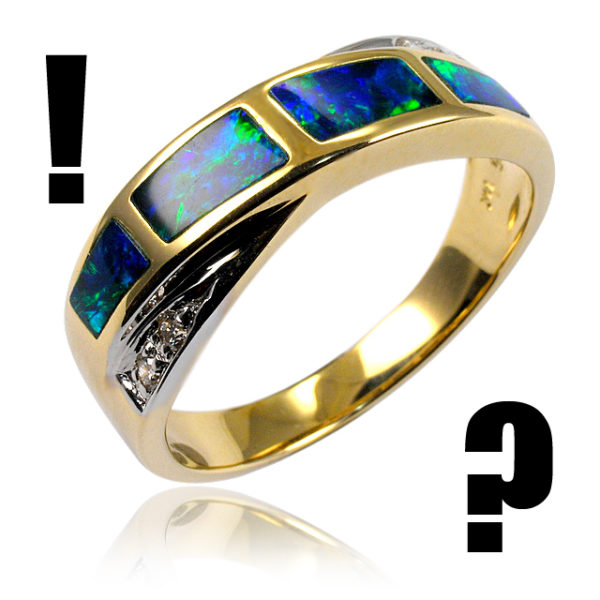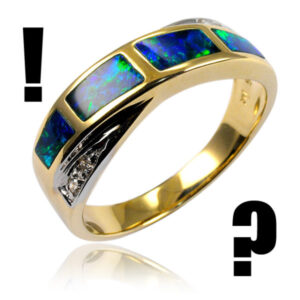The Opal Inlay Ring is a style of ring where the opal flows along the curvature of the band, providing a sleek, smooth look.
This has become a popular style of ring due to its simple, yet effective appeal, however, there are a few attributes to this setting that you should be aware of before purchasing.
Opal Inlay Rings feature slivers of light opal (generally from Coober Pedy, South Australia), that are glued in to small cut-aways or channels in the gold/silver band. The sections underneath the opal have been painted or coated in either black paint or black resin to provide a dark backing to the light opal slivers, thus giving the opal the appearance of Black Opal (the rarest of the Australian Opals). Once the opal pieces are glued into the band, they are then polished down to flow with the curves of the ring.
The achieved look is definitely appealing, however due to the thickness of the opal slivers being only 1mm to 1.5mm, and with them only being glued into the setting, it is highly advisable that these rings should not be worn frequently.
If the ring is knocked/bumped against hard surfaces, due to the opal being considerably thin (and only a hardness of 6.5/10 on the Mohs scale – on par with glass), cracking/fracturing can and most likely will occur.
Frequent immersion in moisture for inlay rings can also create issues with the adhesive breaking down. This leads to the layer of opal splintering away gradually.
In both cases, the inlay ring will need to be sent for repair, and replace the inlaid opal slice.
Because of this, Opal Inlay Rings are NOT suitable for engagement rings or wedding bands.
What we recommend, instead, is to bezel-set/rub-over a solid opal. While the opal doesn’t completely follow the curvature of the band, using the bezel-set/rub-over technique (where the gold lip is folded over the opal to keep it safely contained) will still provide a sleek, simple and effective look for the ring, and provide a piece of jewellery that can be worn in everyday situations.



